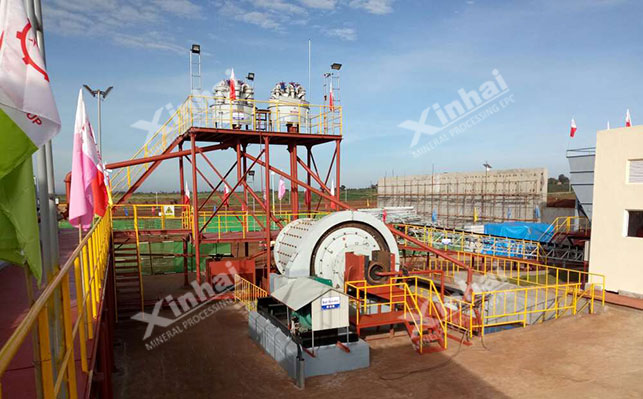
15311826613
Click to add WeChatWhen ilmenite is recycled, the recovery rate is sometimes not high. A very important reason is that the grinding and grading process of the iron production line and the titanium production line is unreasonable, resulting in a large amount of mineral loss. For different ilmenite beneficiation, the requirements for particle size are also different. Let's take a look at the grinding and grading process of ilmenite!
This process uses ball mill and spiral classifier to directly form a closed circuit. This process is a simple grinding and grading process. It has the advantages of low investment, low operating cost (no conveying pump, low power consumption of spiral classifier), and low maintenance cost, but the grading efficiency is low, the particle size is uneven, the over-grinding problem is serious, and the overflow and coarseness are also very serious.

There are two types of processes: single cyclone classification process and combined cyclone classification process.
Single cyclone classification process: The cyclone adopts a single cone cyclone, and the classification particle size boundary is determined according to the process. Its advantages are simple structure, small footprint, and low investment, but the classification is relatively rough, and the fine inclusions in the sedimentation and the coarse inclusions in the overflow are more serious. In order to reduce over-grinding, coarse minerals exist in the overflow, and the coarse minerals cannot be recovered in the flotation operation.

Combined cyclone classification process: This process uses ball mill grinding, the first stage uses a classification cyclone, using a single cone cyclone, the classification particle size boundary is 0.074mm, the second stage uses a dehydration cyclone, using a composite cone cyclone, and the classification particle size boundary is 0.20mm. This process has the advantages of simple structure, small footprint, and less investment, but the overall particle size is fine, the classification is relatively rough, the fineness is more serious in the sedimentation, and the over-grinding phenomenon is serious. In addition, the grinding cost is high.
The advantage of the high-frequency fine screen and ball mill grinding and classification process is that the overall particle size is well controlled, which well meets the particle size requirements of the next process, and the process structure is simple, the floor space is small, and the investment is small. However, the high-frequency fine screen used in this process is prone to coarse particles on the screen and poor fluidity. In order to meet the concentration requirements of the ball mill, this process is only suitable for small processing volumes.
The combination of cyclone + high-frequency fine screen and ball mill to form a grinding and classification process can effectively reduce over-grinding and has a good effect on subsequent sorting operations. In addition, the high-frequency fine screen only classifies the overflow of the cyclone, reducing investment and floor space. However, the concentration of the high-frequency fine screen is low (50% to 60%), so it can only be used in the process of serial processing of small ore volume. Otherwise, the mixed concentration of the sedimentation of the cyclone + the high-frequency fine screen is low, which cannot meet the concentration requirements of grinding.

The above is the grinding and classification process commonly used in 4 types of ilmenite concentrators. In actual concentrators, how to choose the grinding and classification process needs to be comprehensively considered based on the raw material particle size, ore grindability, particle size requirements corresponding to this section of the operation, and the impact on the selection of operations. It cannot be generalized.